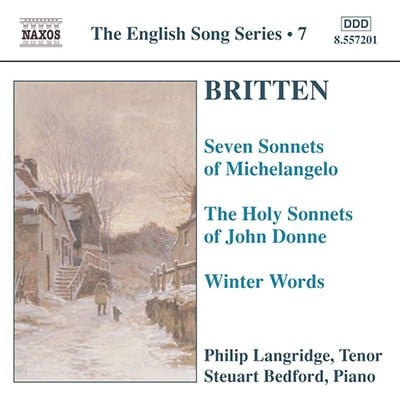The Holy Sonnets of John Donne
op. 35 (1945)Donne (E)
Abbreviations (PDF)
Boosey & Hawkes
The Holy Sonnets of John Donne was written in August 1945 in the wake of the highly successful première of Peter Grimes, soon after Britten had returned from a tour of German concentration camps with the violinist Yehudi Menuhin. The cycle certainly seems to capture some of the bleak intensity of that experience, but it was also a time when Britten was increasingly preoccupied with the music of one of his favourite composers, Purcell, whose death was being commemorated in the year this cycle was composed (the influence of Purcell is to be found in other works from this period such as the String Quartet No.2 and, most obviously, the orchestral variations of The Young Person’s Guide to the Orchestra). In the Donne settings the influence can be felt primarily in the declamatory vocal style and moments of neo-Baroque rhetoric, while the debt is made explicit in the Purcellian ground-bass of the final song, Death, be not proud. The somewhat feverish, relentless quality of this cycle is relaxed only in the sixth song, the beautiful Since she whom I lov’d, the gentle melodic contours and preponderance of warm diatonic harmony of which contrasts sharply with the emotional urgency of the rest of the work.
Reproduced by kind permission of the Britten-Pears Library

Philip Langridge/Steuart Bedford
Naxos 8.557201

